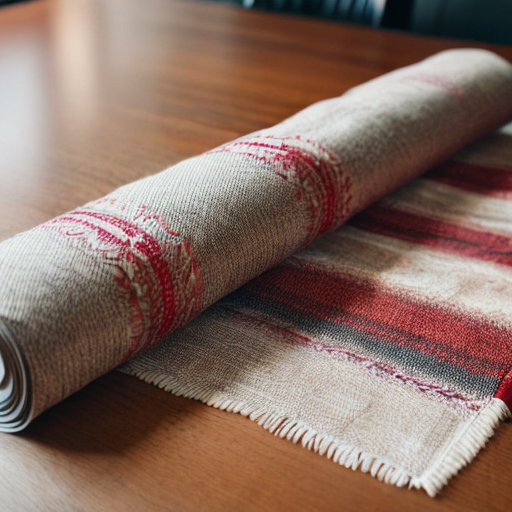So, you've finally decided to take your table decor game to the next level and invest in a table runner. But wait, how long should it be? Should it gracefully cascade down the sides like a majestic waterfall, or should it be more like a mini skirt, leaving just enough room for the table's legs to flirt with the floor? Determining the ideal length for a table runner is a task that requires deep contemplation and a touch of divination. You don't want it to be too short, leaving your table feeling exposed and vulnerable, like a teenager going through a growth spurt. On the other hand, you don't want it to be so long that it becomes a tripping hazard, causing your guests to perform an impromptu tablecloth tango. Finding the perfect balance is like finding the holy grail of table decor – a quest that will test your patience, your measuring skills, and your ability to resist the temptation of making table runner capes for your pets.
An interesting fact about table runners is that their length is typically determined by the size of the table. A general rule of thumb is that a table runner should be about one-third the length of the table, allowing for a balanced and visually appealing look. However, in some cultures, such as in Japan, table runners are traditionally made to be the same length as the table, symbolizing unity and harmony.
Choosing the right length for a table runner is not a decision to be taken lightly. It requires careful consideration of various factors, such as the size and shape of your table. A rectangular table, for instance, might benefit from a runner that spans its entire length, accentuating its sleek lines and creating a sense of continuity. Meanwhile, a round table might call for a runner that gracefully drapes down, like a ball gown for your furniture. And let's not forget about those pesky table legs – they need their fair share of attention too. A shorter runner might be the way to go if you want to showcase those elegant table legs, while a longer one could provide a more dramatic and whimsical touch. So, before you embark on your table runner journey, take a moment to measure, ponder, and envision the perfect length that will make your table sing with joy (and not trip your guests).

Design and aesthetics play a crucial role in creating a visually pleasing and harmonious space, and the length of a table runner can have a significant impact on the overall décor and style. The choice of table runner length can either make or break the desired look you're aiming for. Picture this: a short table runner on a long dining table, resembling a tiny speed bump in the middle of a grand avenue. It's like wearing ankle socks with a ball gown – a fashion faux pas that will leave your guests scratching their heads. On the other hand, a table runner that extends beyond the table's edges, gracefully cascading down like a waterfall, can add a touch of elegance and sophistication to any setting. It creates a sense of continuity and frames the table, making it the focal point of the room. However, it's important to strike a balance. A table runner that is too long can overwhelm the table, drowning it in fabric and stealing the spotlight from other elements of your décor. Similarly, a runner that is too short may appear awkward and out of place, like a misplaced accessory. The key is to consider the overall style and theme of your space. For a minimalist and modern look, a shorter runner that exposes the table's surface can create a clean and sleek aesthetic. On the other hand, a longer runner with intricate patterns and textures can add a touch of opulence and drama to a more traditional or eclectic setting. It's also worth considering the shape of your table. A rectangular table might benefit from a runner that spans its entire length, accentuating its clean lines and creating a sense of symmetry. Meanwhile, a round table might call for a runner that gracefully drapes down, enhancing its curves and adding a soft and romantic touch. Ultimately, the length of your table runner should be a reflection of your personal style and taste. It should complement the overall décor, enhance the table's features, and create a cohesive and visually pleasing space. So, take a moment to envision the look you want to achieve, experiment with different lengths, and let your table runner be the pièce de résistance that ties your entire décor together.
A fun fact about table runners is that they are typically recommended to be about 12-18 inches longer than the length of the table. This allows for a stylish overhang on both ends, creating a visually appealing and balanced look for your table setting.
When it comes to choosing the length of a table runner, practical considerations should not be overlooked. While aesthetics are important, functionality is equally crucial. You don't want a table runner that hinders your guests from comfortably sitting at the table or obstructs their view of each other. It's essential to find the balance between visual appeal and practicality. A table runner that is too long may result in accidental spills and tugs, turning your elegant dinner into a chaotic mess. On the other hand, a runner that is too short might not provide enough coverage, leaving your table vulnerable to scratches and stains. So, before you get carried away with the allure of design, take a step back and consider the practicality of your chosen length. Your guests will thank you for it, and you'll be able to enjoy your meal without any table runner-related mishaps.